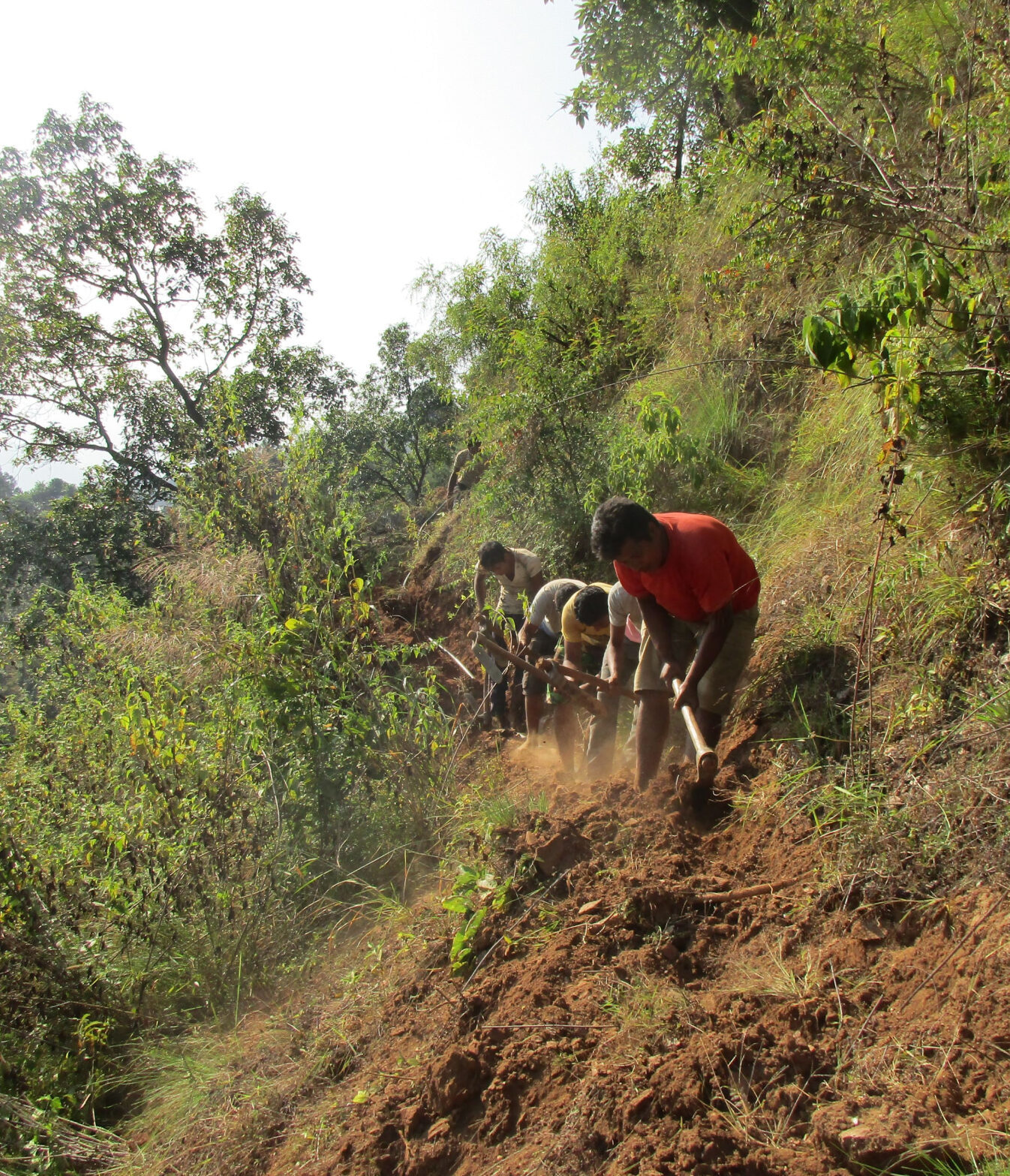Located in south Asia and most known for the mighty Himalayan mountain range, Nepal is ranked 146 out of 193 countries in the UN’s Human Development Index.1 In rural Nepal, more than 2 million people lack access to clean water within a 30-minute collection trip.2
NEPAL BY THE NUMBERS
Nepal Water Crisis
The Water Crisis in Nepal
DO SOMETHING
Fund a Project in Nepal
Serve an entire community or school with clean and living water. Projects range in cost depending on the region, project type, and amount of people served.
Serving the Unreached
Our partner is committed to serving unreached, isolated rural communities where access to clean water is severely limited. In these remote areas, often overlooked families face significant challenges, spending over an hour per trip during the dry season to collect water from dwindling sources, often multiple times a day.
Schools in these regions lack adequate water, sanitation, and hygiene infrastructure, leaving students without consistent access to safe drinking water. This scarcity contributes to preventable diseases, particularly impacting children with limited access to medical care. By focusing on these underserved communities, our partner delivers sustainable water solutions to improve health outcomes and uplift the most vulnerable populations.

Our Plan for the Water Crisis in Nepal
With your help, access to clean and living water will be provided to more than 45,000 people in 150 villages across 3 districts by June 2029. You can make it possible to see:
communities gain access to water piped from spring sources directly to every participating household
schools gain access to safe drinking water and all students trained in improved hygiene and sanitation practices
communities trained to operate and maintain water points
Stories from Nepal
Frequently Asked Questions
1. What is the Nepal Water Crisis?
In rural Nepal, over 2 million people lack access to clean water within a 30-minute collection trip. This scarcity is particularly severe in isolated mountainous communities where small spring sources often run dry during the dry season. Consequently, women and children may spend up to three hours daily collecting water. Additionally, inadequate infrastructure means that many households do not have direct water connections, leading to reliance on distant and often contaminated sources.
2. Why does Nepal face a water crisis when it has so many rivers?
Despite Nepal’s abundance of rivers, many rural communities, especially in mountainous regions, lack access to these water sources due to challenging terrains and the absence of infrastructure to transport water to households. In the dry season, local springs may dry up, exacerbating the difficulty of water collection. Furthermore, there have been limited water projects connecting water supply directly to households in these areas.
3. How does the water crisis affect daily life in Nepal?
The water crisis significantly impacts daily life, particularly for women and children who are primarily responsible for water collection. They often spend several hours each day traveling to and from water sources, which reduces time available for education, work, and other productive activities. The use of contaminated water sources also leads to an increase in preventable diseases, adversely affecting community health.
4. What is neverthirst doing to solve the Nepal Water Crisis?
neverthirst is implementing projects to provide clean water access in Nepal’s rural communities. Their initiatives include:
- Piped Water Systems: Protecting natural spring sources and transporting water through pipelines directly to households.
- School WASH Projects: Providing schools with improved access to drinking water through the installation of community-scale slow sand filters and offering hygiene and sanitation training to students and teachers.
These efforts aim to serve over 45,000 people in 150 villages across three districts by June 2029.
5. Is the water crisis in Nepal improving?
While organizations like neverthirst are making significant efforts to address the water crisis, challenges persist, especially in isolated mountainous regions. The ongoing need for infrastructure development and the scale of the problem indicate that while progress is being made, continued efforts are necessary to achieve widespread improvement.
6. Does the water crisis affect children’s education in Nepal?
Yes, the water crisis adversely affects children’s education. Children, particularly girls, often spend considerable time collecting water, which reduces their school attendance and study time. Additionally, schools lacking proper water and sanitation facilities can deter attendance and negatively impact the learning environment.
7. How can I help people affected by the Nepal Water Crisis?
Your donation to neverthirst helps build wells and water systems for families who need them. One-time or monthly—any support you give makes a real impact.
Get Our Emails
Get our monthly newsletter with stories of impact, ways to pray for the unreached, tips for giving, and more ways to impact the world around you.

